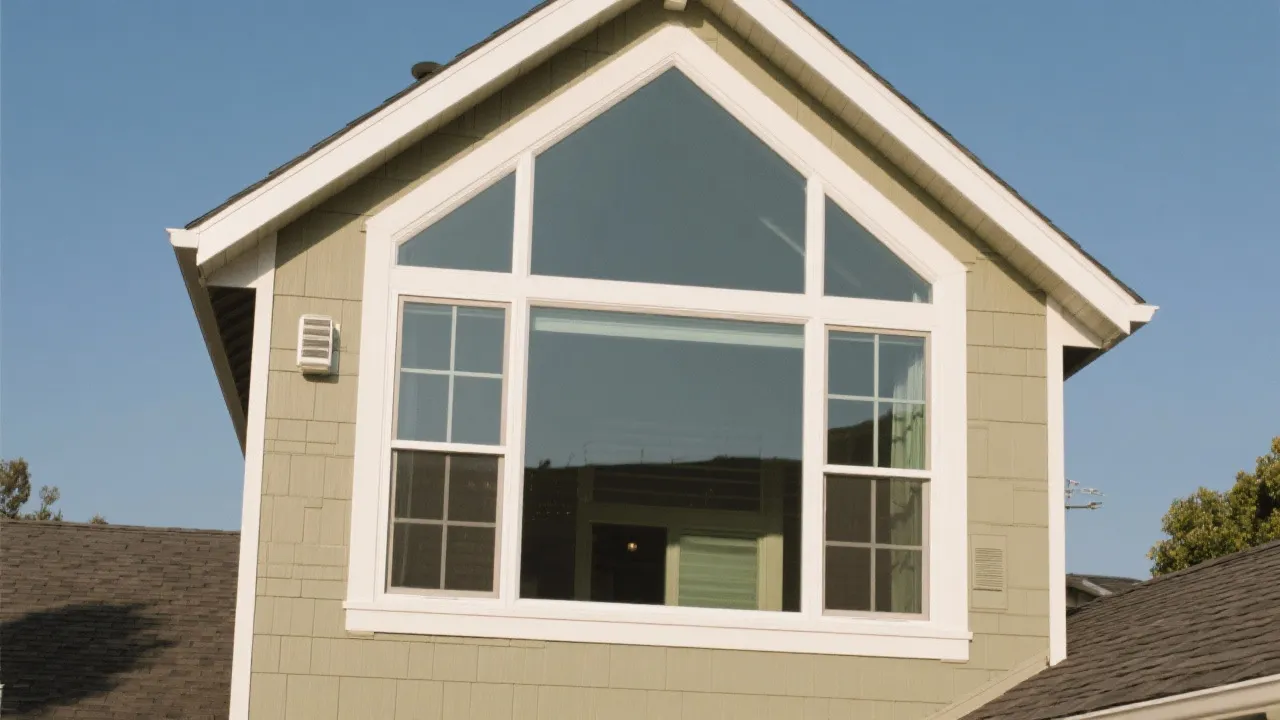Mastering Window Replacement: Essential Insights
This guide explores crucial aspects of window replacement, highlighting energy efficiency, cost management, and emerging technologies to help homeowners make informed decisions. By understanding modern window options, one can boost home value, reduce energy costs, and enhance overall comfort.

Introduction to Window Replacement
Revamping windows can secretly boost a home's efficiency. It's not just a visual change—expect a noticeable drop in energy costs. When considering window replacement, many homeowners discover it’s an investment that impacts both comfort and energy savings. Superior windows work to minimize drafts, minimize UV rays, and enhance overall indoor air quality, making your living space more enjoyable while saving you money in the long run.
Choosing the Right Windows Amid Energy Shifts
With energy prices unstable, picking suitable windows becomes crucial. As climate changes, which windows will you trust to save costs and enhance comfort? Having a good understanding of what your window options entail, including energy ratings and material performance, can significantly influence your choice.
- Architects recommend vinyl windows, starting affordably and known for low upkeep. These windows are not only durable but also come in a range of colors and styles that fit seamlessly with various home aesthetics.
- For excellent insulation, consider options starting at a competitive price. Double or triple-pane windows equipped with gas fills like argon or krypton significantly boost performance compared to single-pane units.
A surprising fact: changing your windows could increase your home’s resale value by over 70%. This statistic illustrates how important windows can be for prospective buyers, who often look for energy efficiency features among other aspects. Modern window tech also boosts security, reducing break-ins, and increasing the peace of mind for homeowners.
Uncovering the Real Costs of Window Replacement
When considering window replacements, anticipate high initial costs. But the good utility bill savings are a game-changer, cutting energy expenses by a quarter. The economics of window replacement often demonstrate that upfront costs are overshadowed by long-term savings on energy bills and heating and cooling expenses. For instance, homeowners can save between $200 and $500 annually, depending on the number and type of windows being replaced.
Despite startling hidden fees, opting for professional installations ensures longevity and efficiency, potentially saving hundreds annually. Hidden fees can come from unexpected framing modifications or necessary permits required by local building codes, so it's prudent to add a contingency to your budget to account for these possibilities.
Homeowners can explore possible rebates and credits offered by energy companies and government programs. However, eligibility varies—timing is key. Keeping track of deadlines for available incentives reinforces the financial viability of your window project.
Energy Efficiency and Environmental Influence
Opting for energy-efficient windows can be financially rewarding. Certified windows could trim substantial dollars off yearly bills. The U.S. Department of Energy emphasizes the benefits of ENERGY STAR-rated windows, which can cut energy costs by up to 12% or more. Therefore, investing in quality windows is not only beneficial for your pocket but also contributes positively to the planet.
Upgrading to advanced insulated windows minimizes thermal loss, benefiting both finances and the environment significantly. The production of energy-efficient windows also tends to consume less energy compared to the lifecycle costs of conventional windows, thereby reducing the overall carbon footprint associated with home construction and renovations.
Modern manufacturing techniques for energy-efficient windows minimize their environmental footprint. Innovations like using recycled materials, or implementing energy-efficient manufacturing processes, can reduce emissions during the production phase of window creation.
The Risks of Neglecting Window Maintenance
Skipping window upkeep risks health issues from mold and allergens. Leaky frames can harbor these hazards. Moreover, windows that aren't regularly maintained can become less energy-efficient over time, compromising your home’s comfort level and increasing utility bills as air escapes or enters through gaps.
Subtle window faults can lead to storm damage or weather-related disasters. For example, single-pane windows can shatter under extreme weather conditions, leading to costly repairs and dangerous situations for inhabitants. Thus, regular inspections are crucial to prevent costly repercussions, ensuring that windows remain functional and secure throughout their lifespan.
Common maintenance tasks include cleaning, resealing seals and frames, and checking for signs of warping or damages. Setting a schedule for these duties can help catch visible issues before they escalate into more profound problems, prolonging the lifespan of your windows and maintaining a safe living environment.
Unlocking the Perks of Smart Windows
Smart windows are rapidly transforming indoor management. They're designed to adjust tint for optimal light exposure, curbing glare and heat intake naturally, which can keep your home cooler during the scorching summer months or warmer in the winter by blocking heat from entering while allowing warmth to be retained.
This tech isn’t just cool—it provides enhanced security with locks and sensors for comprehensive peace of mind. Some models connect to home automation systems, allowing homeowners to control window settings via smartphones or voice commands, making adjustments convenient no matter where you are.
Furthermore, smart windows can reduce reliance on heating and cooling systems, which can lead to significant energy savings. This technology not only enhances convenience but also contributes positively to the overall sustainability efforts in reducing energy consumption.
DIY Installation vs. Professional Services
While it's tempting to tackle window installations yourself for upfront savings, the risks often exceed benefits. Incorrect setups may void warranties and demand expensive fixes, which could surpass the initial cost savings of doing it yourself. Depending on the scale of the project, the installation process can also be labor-intensive and time-consuming, requiring tools and skills that most casual homeowners may not possess.
Professionals ensure flawless installs that boost energy efficacy. A misaligned frame can drive up utility bills over time. The expertise that professionals bring can also help in proper selection and installation techniques that comply with local building codes, ensuring that your investment is protected against potential problems down the line.
Moreover, hiring professionals can save you time—time that you can invest in other essential home improvement projects or your personal life. This not only helps ensure a high-quality installation but can also bring peace of mind knowing the job was completed correctly.
Enhancing Home Aesthetics and Comfort
Windows influence home appeal and soundproofing significantly. Well-chosen windows mitigate external noise in busy locales effectively, allowing for a more tranquil indoor atmosphere. Modern technology has allowed for the development of advanced acoustic windows that significantly reduce outside noise, making your home a sanctuary from urban life.
Even interior design relies on window type and arrangement, complementing or contrasting with decor themes. Large windows allow for an abundance of natural light, enhancing the ambiance of your spaces and making interiors feel more expansive. When architecturally designed to optimize views or create a focal point, windows can also add considerable character and style to your home.
Windows with unique shapes or specialized glass can also provide interesting shadows and light patterns, enhancing the overall aesthetic appeal of your interiors. Good design should flow between both interior and exterior settings, creating a cohesive and integrated environment.
Current Window Trends
Contemporary window designs are shifting away from conventional styles. Expansive panels blur the boundary between indoors and outdoors, creating a seamless transition that elevates overall living experience. Floor-to-ceiling windows enhance the presence of surrounding nature and often serve as decorative elements, allowing beautiful views to become part of everyday life.
Creative framing and glass coatings evolve for functional yet stylish solutions in home design. Innovations such as colored frames or mixed materials can create striking aesthetics that draw the eye while also serving practical functions, such as improved insulation or longevity. A growing trend also involves eco-friendly materials like recycled aluminum, showing that style and sustainability can coexist harmoniously in modern design.
As the market responds to changing consumer desires, the integration of technology and design continues to evolve, pushing the boundaries of what windows can achieve in terms of function and beauty.
Special Requirements for Historical Homes
Historically preserved homes have unique window replacement needs. Custom windows must retain authenticity while optimizing energy efficiency. Homeowners are often challenged to find materials and designs that echo the home’s heritage while providing contemporary benefits. It’s essential to work with professionals who have experience in restoring historical properties to ensure that any replacements align with historical preservation standards.
Financial aid may be available for renovations that honor these historic structures. Various organizations, both public and private, often provide grants or tax opportunities to assist homeowners in preserving the architectural integrity and historical significance of their residences.
It’s recommended to conduct thorough research about local guidelines and available incentives to achieve the balance between modern functionality and historic preservation. This can open doors for funding while maintaining the charm and character integral to historical homes.
Comparing Acrylic and Glass Windows
Deciding between acrylic and glass involves more than just looks. Acrylic offers better shatter-resistance, but glass provides superior clarity. Acrylic windows are surprisingly durable and can resist impact, making them a popular choice in high-traffic areas or regions prone to severe weather.
Acrylic's lightweight nature makes it easier to install, especially for remodels. It can often be molded into unique shapes that provide creative design options that glass cannot. However, acrylic may be more prone to scratching compared to glass, making long-term maintenance considerations essential.
Glass windows, while heavier and more fragile, are typically UV protective and feature better insulation qualities. Ultimately, the choice between acrylic and glass should align with the specific needs of your home, lifestyle, and aesthetic preferences.
The Science Behind Window Insulation
Insulation for windows has advanced significantly, employing techniques like thermal breaks and gas fillings, which considerably enhance comfort. Double or triple-pane windows filled with gases like argon or krypton drastically reduce heat transfer, keeping homes warmer in winter and cooler in summer.
Coatings that block specific light types also offer a fine balance of warmth and visibility. Low-emissivity (Low-E) coatings can reflect heat while allowing light to filter through, contributing to energy savings without sacrificing natural light. Understanding how these coatings work can empower homeowners to make informed decisions that enhance energy efficiency.
Additionally, some modern windows are designed with dynamic insulating properties that adjust based on external conditions, which can significantly contribute to a home’s overall energy management strategy.
Planning Your Window Installation Timeline
Window projects require careful scheduling to prevent seasonal hiccups. Collaboration with contractors streamlines this journey efficiently. Early planning is essential to avoid peak seasons where demand can lead to delays in production and installation. Depending on the complexity of your project, timelines may vary, but a general window replacement can take anywhere from a few days to several weeks.
Consulting with professionals on estimated timelines, ordering materials in advance, and preparing your home for installation can help create a seamless transition from old windows to new. Being proactive about potential weather-related impacts also ensures completion is timely.
Financial Pitfalls of Choosing the Wrong Windows
Poor window choices strain finances, from inflating energy costs to downgrading home value. Selecting energy-efficient models is not just a financial necessity; it’s an investment in sustainability. Moreover, understanding warranty options and the expected lifespan of different types of windows can prevent future costly replacements.
Thorough research and strategic selection avert future financial burdens. Consulting with experts, doing comparative research on various products, and asking for guidance from previous buyers can provide valuable insights. It's worthwhile to explore product reviews, assess warranty options, and study long-term performance statistics before making a purchase.
Innovations to Future-Proof Your Windows
Future-proofing windows aligns them with dynamic lifestyle and tech changes. Smart glass and modular systems lead the way in blending advanced technology with residential design. Innovations like photochromic or thermochromic technologies have emerged, allowing windows to adjust based on environmental changes, enhancing comfort and reducing energy costs.
These windows might incorporate energy-harnessing technology, underscoring an architectural revolution. Imagine windows that not only provide a view but also have the capability to power small home appliances through integrated solar cells. The evolution toward multifunction windows has the potential to change residential energy dynamics significantly.
Research and improvements in window technology are ongoing, suggesting that future developments could provide additional energy savings and enhanced safety features further benefiting homeowners.
Repair vs. Replacement: Deciding on Your Windows
Weigh repair costs against replacements carefully. Emerging materials enhance window longevity, focusing on sustainable solutions. In some cases, repairing windows by replacing seals or glass units may be more budget-friendly than a complete replacement, but this decision often depends on the age, style, and condition of the windows in question.
Assessing comprehensive lifecycle savings could redefine your window strategy. It’s essential to consider long-term benefits and performance as opposed to just immediate costs. This comprehensive evaluation can lead to informed decisions that positively impact the home’s financial standing and aesthetic value over time.
Revealing these windows' complexities empowers homeowners, enhancing their properties with informed assurance. As the landscape of home improvement continuously evolves, so too do the considerations surrounding window replacement and installation. Look for opportunities not just to enhance your home, but also to contribute to sustainability efforts. Consider sharing this guide to aid others in their home improvement quests, where sometimes, it’s the windows that unearth a home's true essence.




